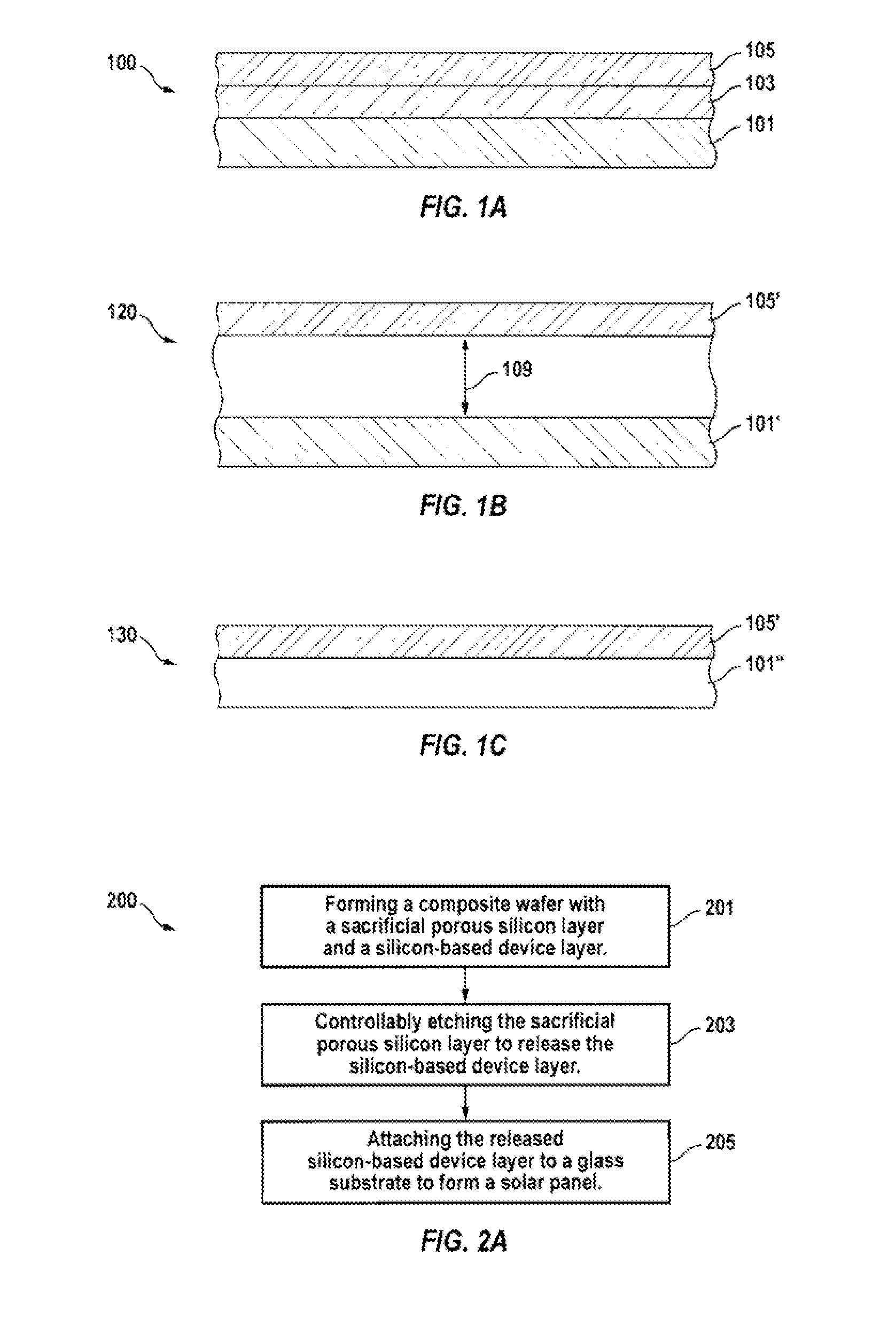Method for selective under-etching of porous silicon
a technology of porous silicon and under-etching, which is applied in the field of solar cell making, can solve the problems of crystals taking an exceptionally long time to grow on silicon ingots, and the impracticality of large-scale production of solar cells from these materials
- Summary
- Abstract
- Description
- Claims
- Application Information
AI Technical Summary
Benefits of technology
Problems solved by technology
Method used
Image
Examples
Embodiment Construction
[0019]FIG. 1 shows a composite wafer 100 used to make a silicon-based device layer used in solar cells. The composite wafer 100 includes a single crystal silicon wafer 101 and a sacrificial porous silicon layer 103 that is deposited thereon, which is referred to herein as a base wafer. The composite wafer 100 also includes a silicon-based device layer 105 that is preferably crystalline or semi-crystalline and is epitaxially grown on top of the sacrificial porous silicon layer 103.
[0020]As described above, the sacrificial porous silicon layer 103 preferably has a porosity of 30 percent or more and is several nanometers to several microns thick. The sacrificial porous silicon layer 103 is formed from any suitable porous silicon material including, but not limited to carbon doped oxide, spin-on-glass (SOG), fluoridated silicon glass (FSG) or a combination thereof.
[0021]The silicon-based device layer 105 is preferably a p-doped silicon-based device layer that has a thickness of several ...
PUM
| Property | Measurement | Unit |
|---|---|---|
| temperature | aaaaa | aaaaa |
| temperatures | aaaaa | aaaaa |
| temperatures | aaaaa | aaaaa |
Abstract
Description
Claims
Application Information
 Login to View More
Login to View More - R&D
- Intellectual Property
- Life Sciences
- Materials
- Tech Scout
- Unparalleled Data Quality
- Higher Quality Content
- 60% Fewer Hallucinations
Browse by: Latest US Patents, China's latest patents, Technical Efficacy Thesaurus, Application Domain, Technology Topic, Popular Technical Reports.
© 2025 PatSnap. All rights reserved.Legal|Privacy policy|Modern Slavery Act Transparency Statement|Sitemap|About US| Contact US: help@patsnap.com



